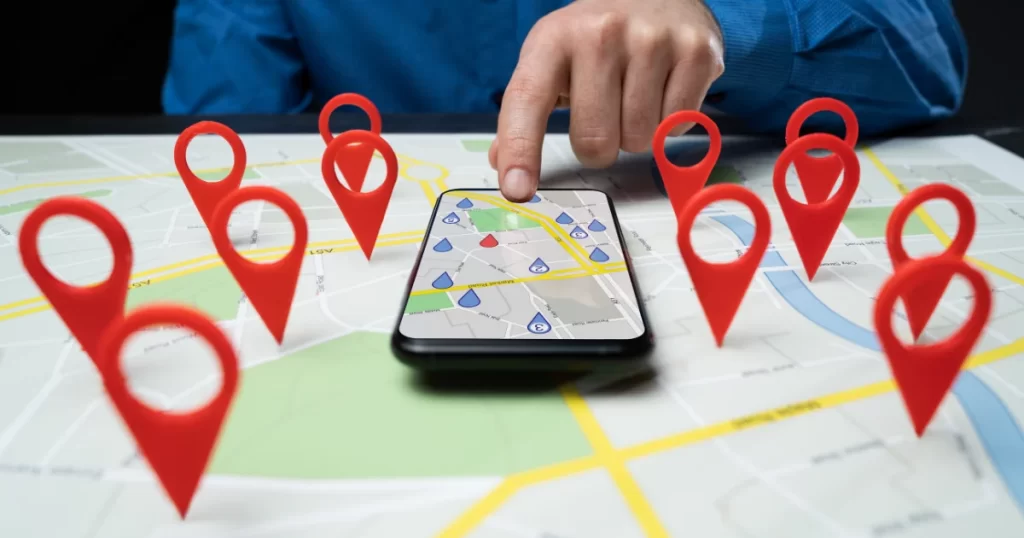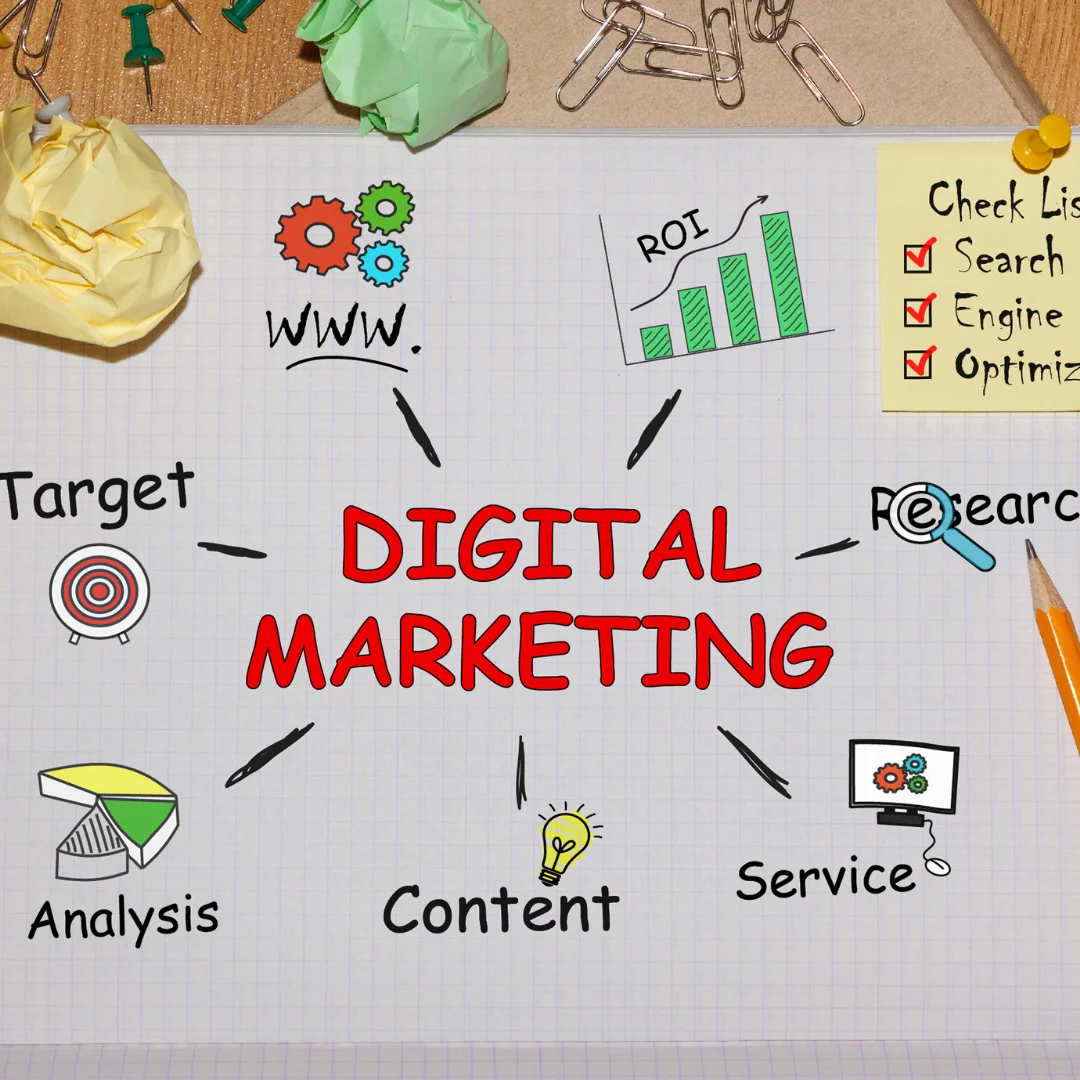Local SEO isn’t just a buzzword in 2025; it’s the ultimate game-changer. If your business isn’t grabbing a piece of that sweet, local pie, then you’re basically shouting into the void—and let’s be honest, the void doesn’t buy your products. So buckle up, because we’re diving deep into the world of Local SEO, where rankings soar, and customers actually find you when they’re ready to spend.
Why Local SEO Matters More Than Ever
Local SEO has become the lifeline for businesses vying for attention in their neighborhoods. With “near me” searches hitting record highs and Google’s algorithms getting smarter (and scarier), mastering local SEO isn’t optional—it’s survival. By the time you finish this article, you’ll know how to dominate Local SEO and skyrocket your ranking in 2025.
Key Takeaways:
- Local SEO is critical for connecting with nearby customers.
- Voice and mobile searches are reshaping search behavior.
- Hyper-personalization is the name of the game.
Understanding Local SEO and Its Impact on Search Results

Let’s break it down: Local SEO is the digital equivalent of waving a giant, neon “We’re Open!” sign at every person within a 10-mile radius. Think of it as the ultimate wingman for your business, making sure you’re front and center when potential customers are ready to throw money at their problems.
So, why does it matter? Two words: search intent. When someone types “coffee near me” at 7 a.m., they’re not contemplating the existential journey of a coffee bean. They want caffeine, and they want it five minutes ago. Your job? Be the provider of that sweet liquid motivation. Fail at this, and you’re just another ghost in the digital graveyard of unoptimized businesses.
The Meteoric Rise of “Near Me” Searches
“Near me” searches have taken off like a rocket because, let’s face it, people are inherently lazy—and that’s a beautiful thing. Why type out “best coffee shop within walking distance of my current location” when you can just say, “Hey Google, coffee near me”? Add voice search into the equation, and suddenly, search engines are practically psychic, delivering hyper-localized results tailored to the whims of users in real time.
Here’s the kicker: if your business isn’t optimized for these “near me” searches, you’re not just missing the bus—you’re watching it disappear into the distance while you wonder what could’ve been. The future is hyper-local and instant. Be there, or be invisible.
1. Optimizing Your Google Business Profile (GBP) for Maximum Visibility
Your Google Business Profile is like your online business card—except it’s free, and people actually look at it. A well-optimized GBP can make the difference between “fully booked” and “sadly staring at an empty store.”
Key 2025 Updates to Google Business Profiles
- AI-Driven Insights: Google’s AI now offers personalized tips to help you outsmart your competitors, tailoring recommendations based on your niche and location.
- AR/VR Integration: Virtual tours are no longer cute; they’re expected. Let customers “walk through” your store before they ever set foot in it. Think of it as the digital equivalent of window shopping, but cooler.
Best Practices for GBP Optimization
- Keep Your Info Accurate: Address, phone number, business hours—get these wrong, and you may as well tell customers to go to your competitors instead.
- Use Keywords Strategically: Infuse your primary and secondary keywords (like “Local SEO” or “best coffee shop near me”) naturally in your business description, posts, and reviews.
- Post Updates Frequently: A stale profile screams neglect. Share events, promotions, or even a quirky “Monday Motivation” to stay on your audience’s radar.
- Leverage High-Quality Media: Upload sharp photos and videos of your storefront, products, or happy customers. Blurry images are the digital equivalent of a messy lobby—off-putting and amateurish.
- Engage With Reviews: Respond to reviews—good, bad, or ugly. It shows you care, and it gives your business a human face (even when it’s gritting its teeth).
2. Leveraging AI-Powered SEO Tools to Enhance Your Local SEO Strategies
Why do the heavy lifting when AI tools can do it for you? These modern marvels are like having a team of SEO wizards on speed dial, minus the awkward team meetings.
Features to Love
- Semrush: Pinpoint keyword gaps, spy on competitors (legally), and track your progress with ease. It’s like having a crystal ball for your SEO strategy.
- SurferSEO: Perfect for whipping your content into shape. From LSI keywords to content outlines that Google will love, this tool is your secret weapon.
- Clearscope: Craft content that ranks and resonates. Clearscope helps you hit the perfect balance of relevance and readability, ensuring search engines and users alike are smitten.
Making the Most of AI Tools
- Automate Repetitive Tasks: Let AI handle audits, keyword research, and competitor analysis while you focus on strategy.
- Personalize Your Approach: Use data insights to tailor your SEO efforts specifically for your target audience.
- Test and Tweak Constantly: AI tools provide real-time feedback—use it to refine your strategy on the go.
3. Building Quality Local Backlinks to Establish Authority in Your Area

Backlinks are like shoutouts from the cool kids. The more quality local backlinks you have, the more search engines trust you. Think of them as digital street cred.
How to Get Them
- Sponsor Local Events: Help fund a community event or charity drive. It’s good PR, and the event website will likely link back to you.
- Collaborate With Local Bloggers or News Outlets: Offer exclusive stories, discounts, or insider tips to earn a spot in their content.
- Engage in Partnerships With Nearby Businesses: Cross-promote each other on social media or create joint campaigns that link back to your respective websites.
- Directories and Listings: Ensure your business is listed in reputable local directories like Yelp, Yellow Pages, or industry-specific platforms.
- Create Shareable Content: Infographics or “Top 10” lists tailored to your area can attract organic backlinks from local websites and influencers.
Pro Tips for Backlink Success
- Focus on quality over quantity. A single link from a trusted local news site is worth more than a dozen spammy directory links.
- Always ensure backlinks come from sites relevant to your industry and location.
4. Optimizing Your Website for Voice Search Traffic and Mobile Devices
Voice search is no longer a novelty; it’s a necessity. With AI-powered assistants like Alexa, Siri, and Google Assistant becoming household staples, people are ditching clunky searches and opting for quick, conversational commands. Meanwhile, mobile devices account for more than 60% of all web traffic, making mobile optimization critical for survival in the digital arena.
The Evolution of Voice Search
Voice search has exploded thanks to advancements in natural language processing (NLP) and AI. It’s no longer about matching keywords but understanding user intent. Today’s voice search algorithms decode complex queries like, “Where can I find the best burger joint open at 2 a.m.?” and provide precise, localized answers. Technologies like Google’s BERT and MUM are driving this evolution, making queries more contextual and personalized.
In short, voice search isn’t just a trend; it’s shaping how users interact with businesses online.
Tips for Voice Search Optimization
- Use Conversational Keywords
Forget robotic phrases like “best coffee shop city center.” Instead, write how people talk: “Where can I get great coffee downtown?” Sprinkle these conversational keywords naturally throughout your content. - Answer FAQs in Your Content
Voice search thrives on questions. Structure your content to answer common queries directly. Think: “How late is your store open?” or “Do you offer gluten-free options?” - Leverage Structured Data
Schema markup helps search engines understand your content. Use it to highlight your business hours, address, and services. This ensures your business shows up in voice search results.
Mobile Optimization Must-Haves
Mobile-first indexing means Google prioritizes your mobile site over your desktop version when ranking pages. Fail here, and your Local SEO efforts crumble.
Lightning-Fast Load Times
- Speed is everything. Use tools like Google PageSpeed Insights to identify bottlenecks and fix them.
- Compress images, enable lazy loading, and minimize HTTP requests.
Responsive Design
- Your site should look stunning on screens of all sizes.
- Test your design on various devices and orientations to ensure nothing breaks.
Avoid Common Pitfalls
- Pop-ups that block the screen (goodbye, users).
- Tiny fonts that require squinting.
- Buttons so small they make users rage-tap.
5. Creating Engaging Video Content to Boost Your Local Visibility
Did you know that video content increases click-through rates by up to 96%? It’s not just a stat; it’s a wake-up call. People love video because it’s fast, engaging, and often more entertaining than text. For Local SEO, video isn’t just an option—it’s a power move.
Why Video Content Works for Local SEO
Google owns YouTube, so it’s no surprise that video content has a massive impact on rankings. Adding videos to your website can improve dwell time—a key ranking factor—and make your business more relatable. Plus, videos are easily shareable, amplifying your reach.
Pro Tips for Creating Killer Video Content
- Spotlight Your Team and Processes
Show customers the people behind the brand. Create short videos introducing your team or giving a behind-the-scenes look at how your products are made. Authenticity sells. - Keep It Short and Sweet
Attention spans are short. Aim for videos under 2 minutes that pack a punch. Use humor, storytelling, or a unique angle to keep viewers hooked. - Optimize for Search
Add captions, use location-based keywords in titles and descriptions, and include a CTA like “Visit us in [Your City]!” This ensures your videos rank well in search results.
6. Incorporating Visual Elements into Your Website Design for Better Performance Metrics

If your website isn’t visually appealing, users will leave faster than you can say “bounce rate.” But visuals aren’t just about aesthetics; they’re about functionality and performance.
The Role of Visuals in Local SEO
Strong visuals reduce bounce rates and increase time-on-site metrics—both of which influence your rankings. A well-designed site instills trust and makes users more likely to engage with your content.
Best Practices for Visual Optimization
- Compress Images Without Sacrificing Quality
Large image files can tank your site’s load time. Use tools like TinyPNG or ImageOptim to compress images. Aim for under 100 KB per file wherever possible. - Add Alt Text for Accessibility and SEO
Every image should have a descriptive alt tag that includes a keyword. This not only improves accessibility for visually impaired users but also gives search engines more context. - Choose the Right Visuals
- Use local imagery to connect with your audience.
- Incorporate infographics to explain complex data.
- Avoid stock photos that scream “generic business.”
- Avoid Autoplay Videos
Nothing scares away visitors like a loud video starting uninvited. Let users choose when to watch.
Common Pitfalls to Avoid
- Busy Designs: Overcrowded pages confuse users. Stick to clean, minimal layouts.
- Unoptimized Images: Pixelated or stretched images hurt your credibility.
- Ignoring Mobile Design: Visuals should look just as sharp on mobile as on desktop.
7. Ensuring Technical Excellence with Core Web Vitals Optimization and Mobile Responsiveness Testing
When it comes to Local SEO, technical excellence isn’t just a “nice-to-have” – it’s the backbone of your digital presence. If your website isn’t technically sound, all the keyword-rich content and clever strategies in the world won’t save you from Google’s wrath. Enter Core Web Vitals and mobile responsiveness testing, the dynamic duo of technical optimization.
What Are Core Web Vitals, and Why Should You Care?
Core Web Vitals are Google’s way of saying, “Hey, your site better work smoothly, or you’re out of the game.” These metrics focus on three major areas:
- Loading Speed (Largest Contentful Paint, or LCP)
How fast does your page load its most important content? If it’s slower than 2.5 seconds, you’re already losing visitors—and Google knows it. - Interactivity (First Input Delay, or FID)
Does your site respond quickly when users click, tap, or scroll? Any delay here is like walking into a store and waiting for the cashier to notice you. Nobody enjoys that. - Visual Stability (Cumulative Layout Shift, or CLS)
Ever tried to click a button, only for it to move mid-click because something loaded late? That’s CLS in action, and it’s maddening. Google hates it as much as users do.
Practical Tips to Nail Core Web Vitals
- Compress Your Images: Massive, unoptimized images are like trying to sprint with a backpack full of bricks. Use tools like TinyPNG or ImageOptim to lighten the load.
- Leverage Browser Caching: Let’s make your site a regular at speed dating—by caching content, it loads faster for returning visitors.
- Minify CSS, HTML, and JavaScript: Clean up that code. Every unnecessary character or line is one more hurdle for your site’s speed.
Mobile Responsiveness: Because 90% of Your Traffic Is on Phones
If your site doesn’t look great on a smartphone, it might as well not exist. Google’s mobile-first indexing ensures that your mobile site gets judged first—desktop comes second. Here’s how to ace it:
- Responsive Design: Your site should look just as good on a tiny iPhone screen as it does on a massive desktop monitor. Tools like Bootstrap or Tailwind CSS can make this easier.
- Tap-Friendly Elements: Buttons need to be big enough for fingers—not just mouse pointers. Aim for a minimum size of 48×48 pixels.
- Test Across Devices: Use tools like Google’s Mobile-Friendly Test or BrowserStack to see how your site performs on various screen sizes and devices.
8. Establishing E-E-A-T Signals Through Comprehensive Profiles and Genuine Customer Feedback
E-E-A-T (Experience, Expertise, Authority, Trustworthiness) might sound like something you’d find on a corporate mission statement, but it’s actually Google’s way of assessing how trustworthy your site is. In Local SEO, E-E-A-T isn’t just a buzzword—it’s your ticket to being taken seriously.
Experience: Showing, Not Telling
Google loves when businesses prove their worth. How do you do that?
- Case Studies and Examples: Got a success story? Share it. People (and search engines) love real-world results.
- Demonstration Videos: Show how your products work or solve problems.
Expertise: Own Your Niche
- Authoritative Content: Publish blog posts, guides, or FAQs that answer common customer questions.
- Certifications and Accreditations: Display your qualifications prominently—think “BBB Accredited” or “Google Partner.”
Authority: Be the Go-To Source
- Backlinks from Trusted Sites: Collaborate with local news outlets or directories. A link from the Chamber of Commerce is SEO gold.
- Social Proof: Highlight press mentions or partnerships that show you’re a respected player in your industry.
Trustworthiness: The Heart of E-E-A-T
Trust is everything, especially in Local SEO. Here’s how to build it:
- Complete and Consistent Profiles: Ensure every platform—Google Business Profile, Yelp, Facebook—has the same accurate information.
- Respond to Reviews: Thank the happy ones, address the negative ones with professionalism, and don’t shy away from criticism.
- Showcase Security: If you’re collecting customer data, SSL certificates and clear privacy policies are non-negotiable.
9. Tracking Your Local SEO Performance with Analytics Tools and Competitor Benchmarking Techniques

You wouldn’t embark on a road trip without a map (or at least Google Maps). The same logic applies to Local SEO. Analytics tools are your GPS, showing you what’s working and where you’re veering off course.
Must-Have Analytics Tools for Local SEO
- Google Analytics 4 (GA4):
It’s not just a tool; it’s the holy grail for tracking user behavior. Monitor traffic sources, page views, and conversions with pinpoint precision. - Google Search Console:
Want to know how people find you? This tool provides insights into search queries, click-through rates, and site performance in search results. - SEMrush or Ahrefs:
Spy on your competitors (legally) and uncover their top-performing keywords, backlinks, and content strategies.
Benchmarking: Know Thy Enemy
Tracking your competitors isn’t just smart—it’s essential. Tools like SEMrush allow you to compare your site’s performance against others in your area. Here’s what to focus on:
- Keyword Rankings: Are they ranking for terms you’re not? Fix that.
- Domain Authority (DA): A higher DA means better trust signals to Google. Work on yours by building quality links.
Metrics That Actually Matter
- Traffic from Local Searches: This shows how well you’re capturing local intent.
- Bounce Rate and Session Duration: High bounce rates? You’re not giving users what they’re looking for.
- Conversion Rates: Track calls, emails, and direction requests directly from your site or Google Business Profile.
Pro Tip: Create Custom Reports
Use tools like Google Data Studio to build dashboards that track key metrics at a glance. It’s like having a crystal ball for your Local SEO efforts.
10. Collaborating with Local Influencers and Engaging in Community Events
Offline strategies can boost your online presence. Influencers and events can help your business connect with the community—and Google loves a community-focused brand.
Ideas to Try
- Partner with local Instagrammers or TikTok creators.
- Sponsor school events or charity drives.
Future-Proofing Your Business
The future of Local SEO is a mix of AI, AR, and good old-fashioned adaptability. Stay ahead by embracing emerging technologies and keeping your strategies fresh.
Final Thoughts
Local SEO isn’t rocket science, but it does require effort. Follow these tips, stay consistent, and watch your rankings soar. Remember: if you’re not doing Local SEO in 2025, you might as well be invisible.





